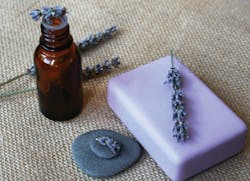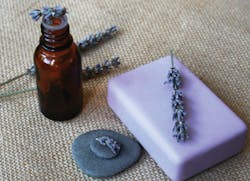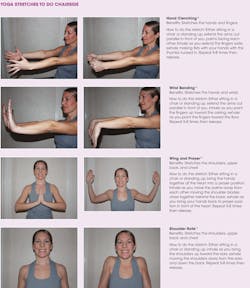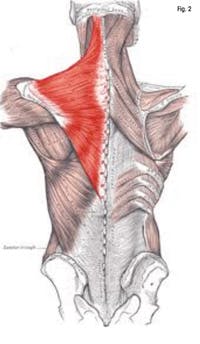The Healing Art of Massage
by Michele A. Fagan, EFDA, RDH, BS
Consider reading: TMJ And Massage Therapy
http://www.rdhmag.com/articles/print/volume-32/volume-12/features/tmj-and-massage-therapy.html
Consider reading: The Power of Touch Upon Dental Patients
http://www.rdhmag.com/articles/print/volume-32/issue-9/columns/the-power-of-touch.html
Consider reading: Shameful data
http://www.rdhmag.com/articles/print/volume-32/issue-4/columns/shameful-data.html
You owe it to your health to make the investment of much needed time to soothe your muscles and ease your mind. The profession of dental hygiene is one that puts continuous stress and strain on the entire body. A therapeutic massage not only offers relief for tight muscles at the time of treatment, but it can be done as a preventive measure for more serious injuries from repetitive stress. Hence, the emphasis is on the word therapy. Massage therapy is a noninvasive treatment that utilizes the body’s natural ability to heal itself. Massage may be the oldest and simplest form of medical care. It was one of the principal methods of relieving pain for Greek and Roman physicians. Julius Caesar was said to have been given a daily massage to treat neuralgia (a sharp, shocking pain due to irritation or damage to the nerve). In the 5th century B.C., Hippocrates (the father of Western medicine) wrote, “The physician must be experienced in many things, but assuredly in rubbing... for rubbing can bind a joint that is too loose, and loosen a joint that is too rigid.”
Hands-On Healing
It is from my many years of personal experience in the dental profession that I am aware of all the musculoskeletal movements the body goes through while treating a patient. During these years, it is massage therapy that has tremendously helped me resolve issues of muscle strains. I had a particular episode a few years ago in which I was having tingling in both of my hands along with numbness at the tips of my fingers. My massage therapist solved the problem. He treated me with a combination of deep tissue massage and applied craniosacral toward the trigger point. A trigger point is a tight and tender congested muscle spot filled with toxins (Figure 1). They are hypersensitive parts of the muscle where there is decreased circulation, increased muscle contraction and spasm, and increased nerve sensitivity ranging from sharp pain to dull ache.
A trigger point develops from:
- overuse of a muscle
- stress
- trauma or accident
- not stretching or improper stretching before physical activity
When a certain area goes under repetitive stress, it becomes a trigger point of pain.
The profession of dental hygiene is physically demanding. The static positioning of the neck, shoulders, back, arms, and hands can take a toll over time. Despite our best efforts to sit in correct ergonomic positions, use loupes, and have instruments with wider handles to lighten a tight grasp, there are days when our bodies are just not in sync due to uncontrollable situations that arise during the day. There are the elderly and physically handicapped that you may need to stand to treat because they cannot lean back too far. Add to the menu the stress of a late patient, an anxious child, multiple root planings, heavily stained patients, and mechanical failure. In addition, let us not forget about those legs and feet that support our bodies all day. How many times have you gotten up and down from your operator stool, walked the hallway to greet and dismiss your patient, taken X-rays, sterilized your instruments, and gone to the supply closet? This surely adds up to a recipe for a full body massage, with a foot massage included!
Ron Sirchie, licensed massage therapist (LMT) in Philadelphia, has 20 years of hands-on healing experience. He commented, “In my treatment of the dental professional, I find that many tend to carry their tension in the trapezius (back of neck and over shoulder) muscles (Figure 2).
He explains, “The motion of leaning the head and neck forward, along with the shoulders, and remaining in that position for an extended period of time results in muscles becoming tight.” He adds, “If you do not loosen up that tightness, it continues to be a source of pain.” Ron also stresses the importance of a full body massage to alleviate the stress and strain on the body as a whole, as tension is not localized to just the trapezius muscles. He adds that stress in the body can be from emotional and psychological causes, not just physical causes. He says, “Taking the time for massage therapy is not only therapy for your muscles, but it also gives you time to relax and be calm and peaceful. This leads to rejuvenating the mind, body, and spirit connection. One cannot heal properly without keeping all three of these in mind. The connection of all three leaves you feeling good all over, and that in turn will give you more energy to be productive in all that your life entails.”
Types of Massage
There are a variety of modalities suitable to your needs. Some of them include:
- Swedish – to increase relaxation and circulation
- Deep tissue – to work on tight areas to release tension and chronic muscle tightness
- Trigger point therapy – to help break the cycle of spasm and pain in a particular area
- Soft tissue release – to provide relief from sore muscle tissue and chronic tightness
- Craniosacral – a gentle massage of points along the head and spine
Positive Benefits
The benefits of massage are continually being studied. Dr. Maria Hernandez-Reif along with Tiffany Field from the Touch Research Institute (TRI) at the University of Miami have researched the benefits of massage. They state that even in small doses – a 15-minute chair massage or a half hour table massage – massages are beneficial. They ideally recommend longer durations and increased frequency, which produce better results. Additional studies recently conducted at both Cedars-Sinai Medical Center in Los Angeles and at the Group Health Research Institute in Seattle show that massage patients have less discomfort, are overall healthier, and have improved immune systems. Reports from the American College of Physicians and the American Society of Pain now include massage as one of their recommendations for treating low back pain. There is scientific proof of the benefits of massage ranging from treating chronic diseases and injuries to reducing the growing tensions of our modern lifestyles. Massage therapy does more than just relax the body and mind – there are specific physiological and psychological effects that occur when it is utilized as therapy, and not simply a mere luxury. Massage not only feels good; it can cure what ails you.
The Benefits of Massage
- Fosters faster healing of strained muscles and sprained ligaments
- Reduces pain and swelling
- Reduces muscle spasms
- Provides greater joint flexibility and range of motion
- Improves discomfort of lower back pain
- Relaxes and softens injured and overused muscles
- Helps with increased concentration
- Helps you sleep better
- Boosts immunity
- Improves circulation of blood and movement of lymph, the body’s natural defense system of toxic invaders
- Lowers the levels of the stress hormone cortisol
- Reduces blood pressure
- Helps relieve tension-related headaches and effects of eye strain
- Enhances the health and nourishment of skin
- Improves posture
- Releases endorphins – the body’s natural painkiller
- Enhances overall well-being
It is advisable that you see a licensed massage therapist who can make the assessment of which type of massage is best for your needs. They can be found at spas and in chiropractic offices. If you are on a budget, you can check massage therapy schools that may offer a discount.
So, the next time you say, “I could really use a massage,” think of it as a healthy necessity! Isn’t your well-being worth taking the time for yourself? Let the touch of a massage therapist ease those aching muscles, while letting your mind take a break and just fade away from all of life’s responsibilities for a bit. Let someone else take care of you for a change. You deserve it! It is a prescription for health that does not require medication. It can be refilled as often as you like, no referrals necessary. Remember this: Massage, it does a body good! RDH
References
American Massage Therapy Association. Retrieved from http://www.amtamassage.org/index.html
Barnes C, Hlava G. (2008) Ergonomics – A Buzz Word. The Preventive Angle, 1(1);2-5. Retrieved from http://www.youngdental.com/pdf/TPAV1I1.pdf
Fellingham C. (2009) The Healing Touch: Benefits of Massage. Ladies Home Journal. Retrieved from http://www.lhj.com/health/stress/relaxation-techniques/the-healing-touch-benefits-of-massage
Graves G. (2011) Good Alternatives: The Benefits of Nontraditional Medicine. Ladies Home Journal. Retrieved from http://www.lhj.com/health/news/benefits-of-nontraditional-medicine/?page=2
Jordre B, Bly J. (2012) Protect Your Musculoskeletal Health. Dimensions of Dental Hygiene, 10(1);30,33-34. Retrieved from http://www.dimensionsofdentalhygiene.com/ddhnoright.aspx?id=12305&term=protect%20your%20musculoskeletal%20health#.UKFhWocX-Tc
Kagan J. (2008) Mind Your Body. Modern Hygienist, 28-29.
Stevens MM. (1998) Massage helps relieve aching muscles, so why not invite a therapist to the office? RDH, 18(6). Retrieved from http://www.rdhmag.com/articles/print/volume-18/issue-6/feature/massage-helps-relieve-aching-muscles-so-why-not-invite-a-therapist-to-the-office
Peterson A. (2012) Don’t Call It Pampering: Massage Wants to Be Medicine. Wall Street Journal. Retrieved from http://online.wsj.com/article/SB10001424052702304537904577277303049173934.html.
Valachi B. (2012) Positioning for Success. RDH, 32(1). Retrieved from http://www.rdhmag.com/articles/print/volume-32/issue-1/features/postitioning-for-success.html
Winters C. (2011) On the Healing Edge. Prevention.
Rescue Rittenhouse Spa. (2010) Why Massage. Beauty Aficionado. Retrieved from http://beautyaficionado.com/why-massage
MICHELE A. FAGAN, EFDA, RDH, BS, has 28 years of experience in the dental field that has provided her with a combination of roles as dental hygienist, expanded functions dental assistant, teacher, and writer. She currently practices dental hygiene in private practice in the Philadelphia area. Additionally, she is an advocate for food allergies. She can be contacted at [email protected].
Past RDH Issues



